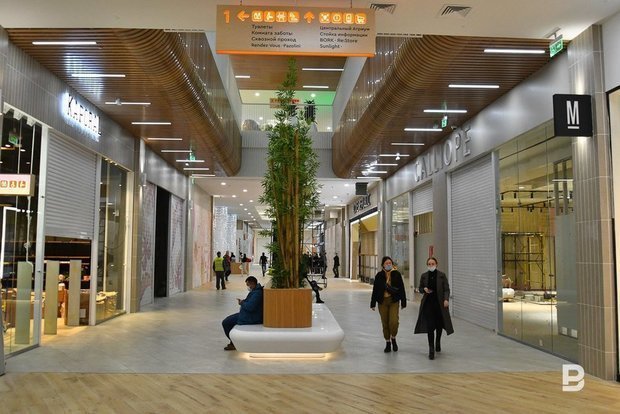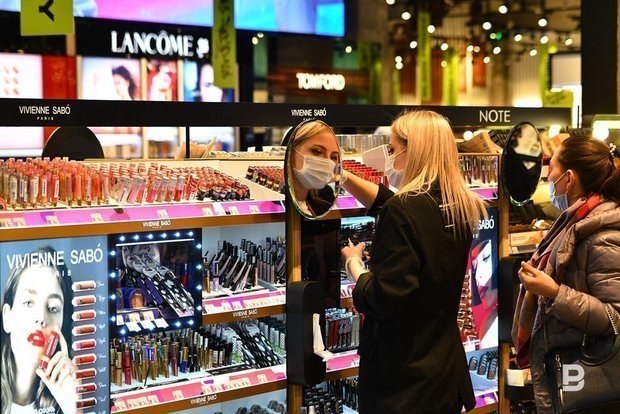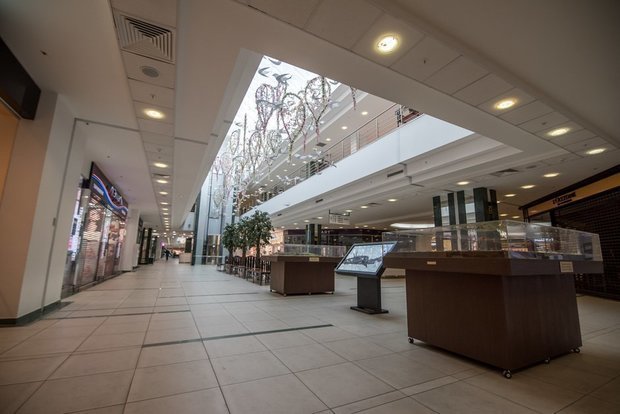Elena Stryukova: ‘Life goes on, consumers are forming new habits’
Russian Guild of Managers and Developers Envoy — about the new realities of shopping centres, the redistribution of demand, and a growth of turnover of Russian brands
Despite the withdrawal of Western retailers, life in Kazan malls continues, and a number of tenants, especially in the fashion segment, have seen an active growth in turnover. Elena Stryukova, the managing partner of Perfect RED, authorised representative of the Russian Guild of Managers and Developers (RGUD) in the Republic of Tatarstan, informs about the new realities of shopping centres, redistribution of demand, and changing consumer habits. In the next review of Kazan retail real estate, the expert tells how brands, mainly Russian, continue their development, opening new stores and capturing sharply empty niches.
Shopping centres
Market indicators
- Aggregate supply in the segment of shopping centres is represented by 23 objects with a total area of 848 thousand square metres. There are seven high-quality shopping centres in Kazan. The total area of these objects reaches 558 thousand square metres.
- At the time of the study, 17% (+14,7% by the end of 2021) of the areas in the seven largest facilities were free (the calculation was based on the leased area). There is no commercial activity on another 7% of the area.
- The total area available for rent in the largest shopping centres of Kazan at the time of the study is more than 55,2 thousand square metres. If international operators do not resume their work in the near future, then another 25 thousand square metres will be free.
- 39 retail operators have not terminated lease agreements but do not conduct commercial activities at the time of the study.
Shopping centres and outlook
New reality
The retail real estate segment is undergoing a powerful transformation. Although it started a few years ago, slightly anticipating the changes in consumer habits caused by the pandemic, we are still being at the beginning of the road.
In the coming years, the meaning and format of retail real estate will be completely rethought. But we are convinced that it is premature to talk about a decline of the era of format shopping centres.

Certainly, there is a drop in traffic in shopping centres, including due to that international brands used to occupy up to 60% in some large regional facilities. In Kazan, the share of tenants who have suspended their commercial activities is only 7%. The owners are working on full or temporary replacement of non-functioning stores. This is not a quick process. But for those tenants who continue to work, there are positive trends.
Redistribution of demand
It is no longer a forecast, but a fait accompli: now there is an active redistribution of demand. Consumers are forming new habits. Life goes on, people need to go to work and dress their children, equip their apartments. And consumers are learning to do it in a new way, in new places. We are seeing an active growth in the turnover of a number of tenants, especially in the fashion segment, who have continued their work. These are mainly Russian brands. The same companies continue their development, opening new stores and seizing sharply empty niches. For example, Kari, Gloria Jeans. And even though tenants who are opening new stores are more selective in choosing objects and focused on minimal capital costs when opening, development continues.
It is absolutely certain that new large and small stores will be opened as a response to the existing demand. A reduction in the supply of retail operators does not mean a reduction in consumption.

Rental rates
A survey of the owners of shopping facilities in Kazan showed that in the vast majority of all rental rates have been indexed, in accordance with the terms of the contracts, from 5 to 10%. Against the background of the existing inflation, this means an actual drop in rates in real terms. The competition between commercial properties for new tenants is very high. In the desire to fill empty areas, some owners will be forced to dump. And this does not always mean a reduction in rental rates directly. Tenants often put forward more requirements for the readiness of premises, wanting to reduce their capital costs during development.
Terminations are inevitable
Any business has its own margin of safety, but it is not infinite. For those companies that have suspended their commercial activities but do not terminate lease agreements, this period is coming to an end. Tenants continue to bear the costs of renting premises and paying minimum wages.
If in the near future these companies do not find a solution to continue the business (sale to another legal entity, transfer of the operating business to Russian management and other options), then a wave of cancellations of lease agreements will inevitably follow. This is always a difficult decision, because investments in brand awareness and the stores themselves are really huge. Some operators have been building their own retail chains for a decade. At the end of August, there will be 6 months from the date of suspension of most stores. Presumably, this will be a kind of cutoff for decision-making.

Islands of stability
The situation with the closure of international brands have practically not affected district shopping centres and facilities in cities with a population of 50,000 or more.
Traditionally, the composition of tenants of shopping centres of district and microdistrict formats relied on local businesses. In such facilities, by April of this year, attendance had returned to the indicators of the beginning of the year and even slightly (10-15%) exceeded the indicators of 2021.
From the point of view of investments in retail real estate, prospects are presented to us precisely in the niche of small district shopping centres and a well-located and designed street retail format.
Trends and outlook
Despite the unfavourable economic situation, according to the results of the first half of 2022, the vacancy rate in the street retail segment in Kazan has decreased by 0,2 percentage points and amounted to 8,3%. In the first quarter of 2022, as in other real estate segments, there was a lull. Investors, users of premises waited. In the second quarter of 2022, the demand for street retail format premises has increased significantly. Most likely, these are the consequences of deferred demand.
The average rental rate in the first half of the year was 928 rubles/sq m per month, which is by 7,1% higher than at the beginning of 2022. The analysis showed that the growth of rental rates was uneven. The maximum figures were recorded in the Moskovsky and Privolzhsky districts of the city, +23% and +15%, respectively.
According to the trade corridors of Kazan, the highest rate is fixed on Zorge Street, Yamasheva Prospekt and Dekabristov Street.
Reference
The author's opinion may not coincide with the position of the editorial board of Realnoe Vremya.